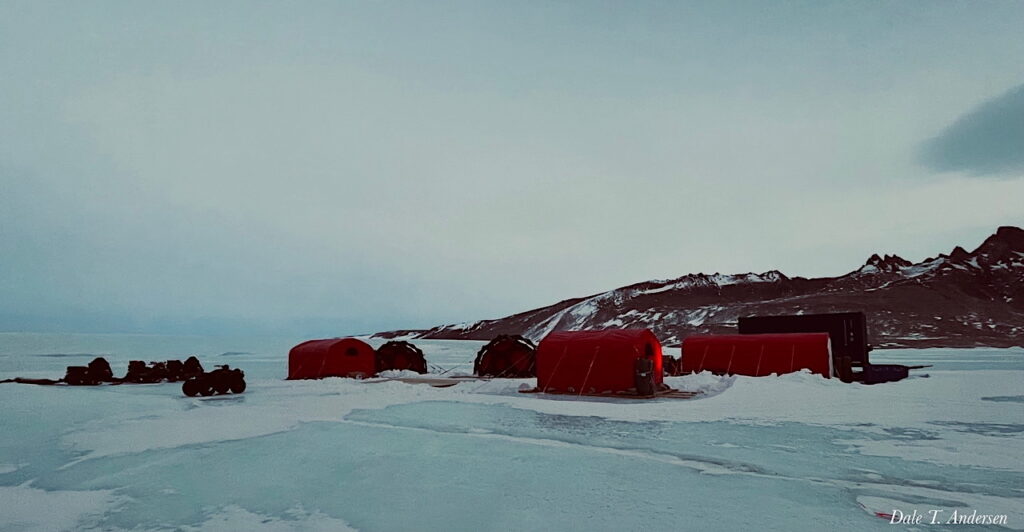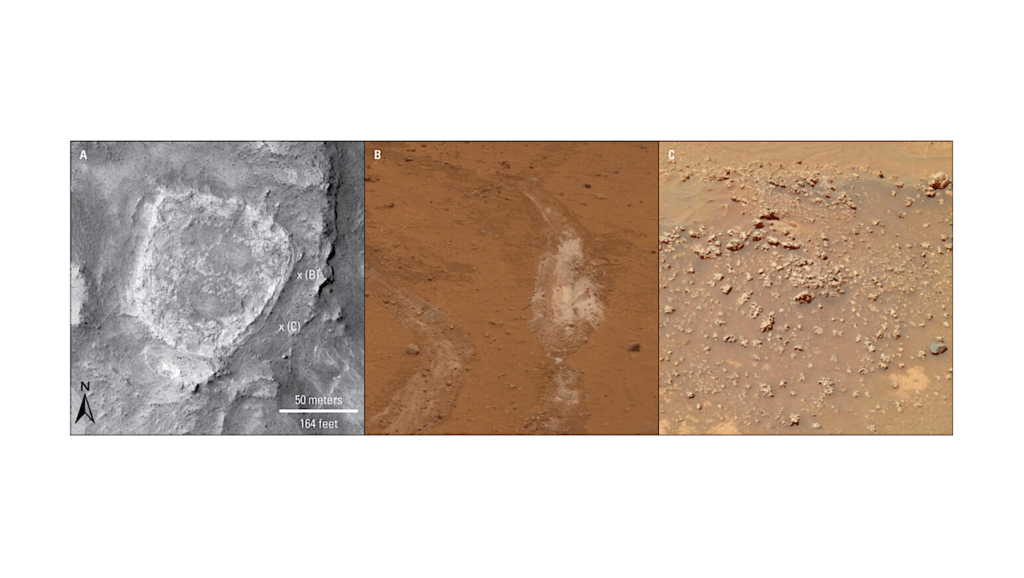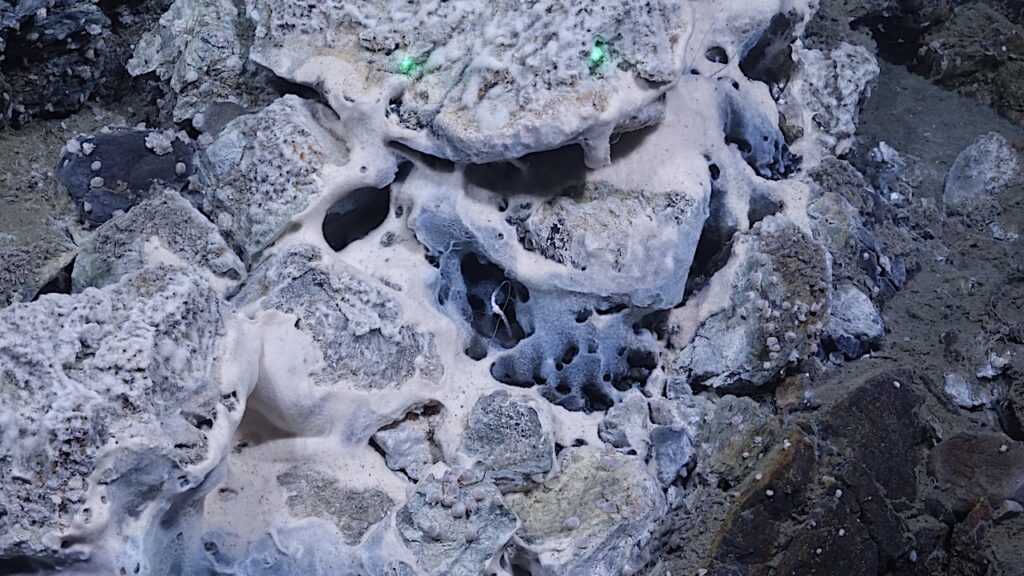Ladakh’s Rock Varnish May Help Identify Habitable Environments In Space

Magnetofossils– fossil remains of magnetic particles produced by magnetotactic bacteria have been spotted in rock varnish layers in Ladakh. The study suggesting biotic processes in the formation of rock varnish indicates how life can exist in extreme environments, providing valuable insights for astrobiology as well as for planning future space missions targeting to identify habitable environments in space.
Ladakh, known as the “cold desert of India,” experiences extreme climatic conditions such as high UV radiation, significant temperature variations, and limited water availability, making it a suitable terrestrial analogue for Martian studies.
Researchers from Birbal Sahni Institute of Palaeosciences, Lucknow (BSIP), an autonomous institute of Department of science and Technology (DST) were inspired by the similarity between the rock varnish observed in Ladakh and that seen on Mars, particularly during the Perseverance rover operations.

Field photographs of the rocks sampled for rock varnish studies from NW Himalaya (Leh, Ladakh). The photographs from (a) to (d) panel I represent the rocks designated as spots RV-1 to RV-4 respectively. Panel II shows striking similarities bewteen rock coatings on Mars and Ladakh Enviroment. — Indian Ministry of Science & Technology
They collected samples of rock varnish from the Ladakh region, chosen and employed XPS to analyse the surface chemistry of the rock varnish. The analysis conducted by the lead author Dr. Amritpal Singh Chaddha and Dr. Anupam Sharma at BSIP with its Sophisticated Analytical Instrumentation Facility (SAIF) established by DST, helped identify the nanochains of magnetofossils.
Additionally, higher concentrations of oxidized manganese (Mn4+) and carboxylic acid functionality on the varnish surface were identified, indicating organic signatures.
The study published in Planetary and Space Science showed that rock varnish from Ladakh, a potential Martian analogue site, contains enriched concentrations of magnetic minerals likely derived from biotic sources.
The findings highlighted the potential of rock varnish as an archive of ancient environmental records and as a geomaterial for astrobiological studies.
By identifying biotic signatures in rock varnish, scientists can better target potential biosignatures on Mars and other planetary bodies, aiding the search for extraterrestrial life. This information is crucial for planning future space missions by ISRO and other space agencies, including Mars exploration, where identifying habitable environments is a primary goal.
Exploring the astrobiological potential of rock varnish from a mars analogue field site of Ladakh, India, Science Direct
Abstract — Rock varnish, a dark-coloured natural feature rich in manganese (Mn), iron (Fe), and clay minerals that forms on rock surfaces and subsurface rock fractures in extremely dry and cold environments, is believed to provide nutritional support to microbiota. Because varnish supports an extensive microbial community, this rock coating is considered a substrate for potential microbial life to thrive in extreme environments on Earth. Although research in the past decades have advanced understanding of the varnish microbiome, little is known about this microbial community in settings that are high altitude (lower oxygen), dry, and cold. We present here new morphological, chemical, and rock magnetic results of rock varnish from this environmental setting, the Ladakh, a potential analogue site for life in extreme environments. Our results include the presence of putative magnetofossils-in the form of nanochains present in the rock varnish layer. Further, the higher concentrations of oxidised Mn4+ and carboxylic acid functionality on the varnish surface revealed organic signatures. These collective results point towards the enriched concentration of magnetic minerals on the varnish layer that are possibly sourced through biotic forms. Consequently, the rock varnish can serve as an archive of ancient environmental records, as well as a potential geomaterial for astrobiological studies from the Martian analogue field location of Ladakh, which needs to be explored further for extensive biogeochemical studies.
Astrobiology








